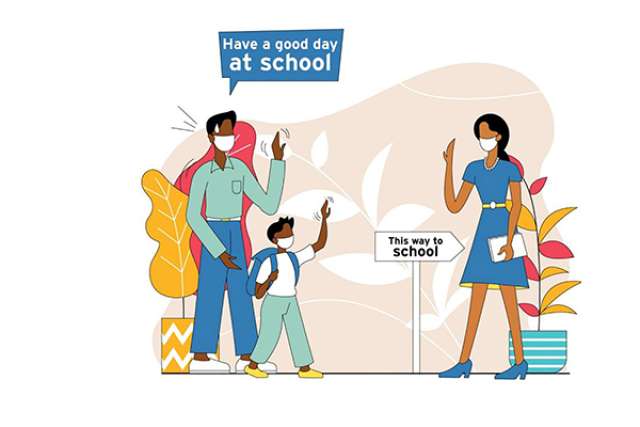With Los Angeles County school districts getting the green light from state officials to reopen elementary schools, everyone — parents, teachers, administrators and children — is understandably wondering about safety.
Although the Los Angeles Unified School District’s reopening plan has been approved, the district hasn't set an opening date yet, and it will continue to offer 100% online schooling for those who want it through the end of the school year. While the county's 1.5 million K–6 students and their parents wait to see what happens, UCLA Health professionals have insights on how schools can best manage the move to in-class instruction.
Shangxin Yang, an assistant clinical professor of pathology at the David Geffen School of Medicine at UCLA and father of a fourth-grader, said he's optimistic about the decline of COVID-19 cases in Los Angeles County and what the long-awaited return to school means for local students.
"When you look at the community, all the rates are going down in a very dramatic fashion," he said. "In the meantime, there's a lot more solid evidence suggesting that reopening schools with multiple mitigation strategies actually works with very minimal, rare outbreaks in schools."
A paper published in January in the Journal of the American Medical Association reports "little evidence that schools have contributed meaningfully to increased community transmission" of COVID-19.
Yang and Dr. Anuradha Seshadri, a pediatrician and internist at UCLA Health, shared ideas that can help keep everyone safer.
In the classroom
- Keeping students in fixed groups with the same classmates and teachers for all on-campus activities prevents infection and supports effective contact tracing, Yang said. Reducing interaction between groups of students decreases the risk of infection, and any that occur would be "limited to that group and much less likely to spread to other groups on campus."
- Wearing masks and physical distancing are still essential.
- Families of students in each group should only interact with other families and households in that group. "You can't just put this on schools," Seshadri said. "It's your responsibility as a family member for that child you are sending to school."
- Teachers can help young students comply with safe practices by turning them into a game. For instance, children who wear their mask all day and follow all the protocols can earn stickers for their good behavior, and at the end of the week, and the student with the most stickers wins a prize. "It helps kids at that age to understand that it’s not just about themselves," Seshadri said. "It's protecting other people — people and friends that they care about, and their family members, too."
- Markings on the floor that denote proper physical distances are a good idea for shared spaces such as hallways and locker bays. Staggering access to lockers — and keeping group members' lockers 6 feet apart — can prevent students from crowding the area. Kids should also wash their hands before and after touching their lockers, which should be wiped down frequently.
Getting to school
- Walking or carpooling with members of the same classroom group is the safest option.
Shared spaces
- Cafeteria access should be limited, and meals should be pre-packaged, according to Centers for Disease Control and Prevention guidelines. Water fountains are high-touch areas, so parents should consider sending students to school with their own refillable water bottles. "If there is a shared water fountain, it should be cleaned frequently," Seshadri said.
- The most likely location for virus transmission is the staff lounge. "People should not share food, and they shouldn't really be talking while they are eating, to be honest," Yang said. "Once they take off their mask, they should be just eating and if they want to talk, they should put the mask back on."
"You can't just count on one thing, because nothing is perfect," Yang said. "You really need multiple layers of strategies, including how you limit the group. But on top of that, you still need to have masks. You still need to practice social distancing. You have to do multiple things to minimize the risk."
This story was adapted from a longer version on UCLA Health’s website.



